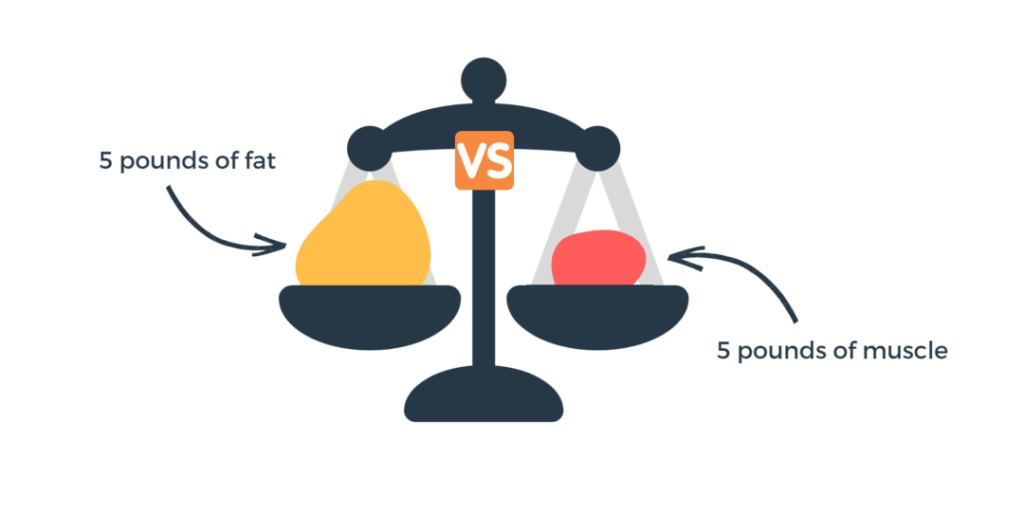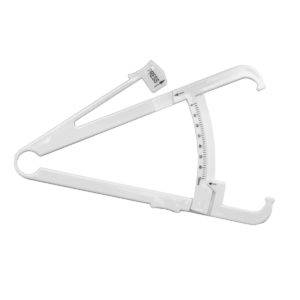A body weight scale is a great tool to have for monitoring weight loss and weight gain, however it can have some negative side effects on those who have high emotional investments in their goals.
Most professionals suggest setting a healthy and realistic weight loss goal before starting your journey. This includes not only your target weight, but the time you would like it to take to get you there. Adding a scale to your self- monitoring routine can be a help tool for a few reasons:
1-Gives You a Number to Track
Scale will help you track your progress. By giving you a number to reference, you can see your progressive in a comprehensive set of numbers. Being able to see your weight loss in a simple number helps you recognized even small amounts of progress. Seeing this progress can help motivate you to go harder and further and turns you into your own competition.

2-It’s a Measurement Tool
Having a scale around to use as a measurement tool helps you see how your lifestyle changes are affecting your weight. If you have a week showing good results on your scale, you can go back and look at what you did differently this week than last. Helping you understand what is working for you, will help you lose weight or body fat more effectively and have a better time while doing it.

Downsides of Using a Scale
Using a scale for fat loss is known as Self- Monitoring, an evidence- based strategy used for many kinds of behavior change. The American Heart Association says weighing in daily can be a positive tool for most, but in some can become obsessive and cause anxiety and depression.
1-May Have an Emotional Attachment
For some, the number on the scale is more than just a number, it is a reflection of their self- worth. When weighing in daily, the scale can often tell you there has been no change, or even a negative change in your statistics. For those with an emotional dependence on their scale, it can impact how the rest of their day will go, with negative readings causing some to spiral into anxiety and depression. This ultimately has an impact on what the tool is made for, motivation! If a negative reading ruins your day, it is far less likely you will be motivated to continue wanting to try and lose weight.
2-Not 100% Accurate When it Comes to Body Fat Loss
With any at home body fat measuring technique, there are inaccuracies which can lead you to believe your hard work isn’t paying off or even backfiring on you. Don’t worry, there are very good reasons for this, and other tools to add to your routine to combat this effect. A couple factors that affect the accuracy of your real body fat loss compared to your weight are:
A. Your weight gain or loss is not directly correlated to the amount of body fat you have.
Have you ever been diligently working out for seemingly forever and you just can’t seem to get the scale to move, or even gain a few pounds? This happens because muscle actually weighs more than fat! So while you may actually be lowering your body fat percentage, and becoming more toned, you may be replacing those pounds with muscle.

B.Even electronic body fat measurements on scales are not 100% accurate.
Certain electronic scales can approximately measure your body fat percentage by using sensors underneath your feet that send electrical currents up your leg, through your pelvis, and back down to the scale. The scale detects how much resistance is put on the current and estimates how much of the mass it traveled through was fat. Fat contains less water than muscle making it denser and more difficult for the current to pass through. Humans, however, hold their body fat in different parts of the body, in different ratios, which the scale cannot read or predict. They can take into account your gender, height, and approximate activity level, but sometimes this does not provide all the information needed.
thats why those expensive scales which even shows the weather is a waste of money.
Nobody wants to be alone; your scale needs a friend.
To get the most out of tracking your weight loss, give your scale a friend! Adding some extra tools to your self- monitoring will give you a better idea of where you’re losing weight, or why you aren’t losing any at all.
Tape Measure
I keep a tape measure on me at all times, you’d be surprised how handy they are! For tracking your body fat loss progress, they are essential. As we discussed before, a scale can only tell you so much. By measuring certain parts of the body regularly, you will get an accurate visual of where the numbers on your scale are coming from. You should measure these parts of your body, once a week, twice in a row.
- Arms
- Chest
- Waist
- Hips
- Thighs
- Calves
Calculate, or let an app do it for you, the average of your measurements to get your final total inches, and then total inches lost. Inches lost equals body fat loss!

Body Fat Calipers
Body fat calipers are a tool that measure the skin fold thickness in certain parts of the body by pulling the skin and subcutaneous, or soft, fat away from the muscle, then clamping and calculating the thickness. This method can be fairly accurate when done correctly and only show a 3.5% error rate. This percentage is largely due to the fact that there are several different equations used to calculate the caliper’s readings. However, like the measuring tape, when combined with other tools like the scale, you can get a better idea of where the fat is actually coming off of. Measurement sites for calipers include:
Women
- Vertical fold on the back of the arm between the shoulder and the elbow.
- Diagonal fold at the Iliad Crest, or the ridge if the hip bone.
- Vertical fold on the front of the leg halfway between the hip and the knee.
Men
- Vertical fold between the armpit and the nipple.
- Vertical fold 1 inch from the belly button.
- Vertical fold on the front of the leg halfway between the hip and the kne

Progress Photos
Like when your mom used to mark your height on the inside of a closet door frame, progress photos can give you a powerful visual of your progress over time. When we see ourselves every day, it is incredibly hard to see the small changes that are happening all the time to our bodies. Furthermore, many of us are our own worst enemies, and can be very critical of ourselves when staring at our reflection in the mirror. Progress photos on the other hand, give you a true reflection of your hard work, showing you the real impacts your life- style changes have made.

How to Best Use a Scale
Yes! There is a right and wrong way to use your scale. Rules, rules, and more rules. But not following these few simple guidelines will give you largely inaccurate readings and will make your job of achieving your set goal much harder.
Location
Pick a spot for your body weight scale that has a flat, stable, and level surface. Harder surfaces are best and will get you the most accurate reading. You should avoid carpet at all costs. Once you find this prime location, this is where your scale should live from now on. Moving it from here to there will give an inconsistency in how it reads your data resulting in varying results on your end.
Time
The amount of food and fluids, urine and general hydration throughout the body, fluctuates frequently throughout the day. Because of this, your scale will show you varying weights, although your actual your primary mass may be the same. Professionals recommend you choose a time of day when food and beverage factors are at their lowest. The best time for this is usually first thing in the morning before you have eaten.
Use the Same Scale
Even if you’re weighing at the same time of day, and keeping your scale, or scales, in the same place, using multiple scales can lead to inaccurate reading. Say you have a scale in your master bathroom and one in the family bathroom, but you choose to shower in the family bathroom this morning so why not weigh in in there instead? Like discussed above, scales will give different readings when on different surfaces, so using two different scales will surely provide you with varying results.
Daily Weight In
The American Heart Association reports, studies have shown that checking your weight daily can be a useful motivational tool to help people stay on track and meet their weight loss goals. Other than extra motivation though, there are no other benefits of a daily weight check. Because your body is fluctuating regularly, it is difficult to determine real lasting results in anything less than a week. This is why, if checking daily works for you, you should still calculate an average for the week to determine your weight loss most accurately.
App Recommendations
Happy Scale for IOS users
Remember
Many people are, or can become, very emotional invested in their weight loss. When the scale does not accurately reflect the hard work and effort one has put in, it can have a heavy effect on one’s mood, sometimes cause a person to become stressed, have anxiety, or even become depressed.
| 1 | It’s a Number Scale, Not a Happiness Scale The scale is best when used as a self- monitoring tool. It should provide you with a way to compare your result, with your own results! Remember that there are very healthy reasons why your weight isn’t changing or even is rising. Putting on a few pounds in muscle should be an accomplishment, not a reason for a terrible day. |
| 2 | Don’t Let the Scale Define You It’s important to keep in mind that there is no such thing as the perfect weight. There are so many factors that go into what a healthy weight is for a person, that judging yourself by the number on a scale is very unfair to yourself. A person’s target weight is a very individualized and personal thing and should really be set to a range of numbers, instead of just one. A healthy weight for you could be nowhere near your siblings or even some one of the same heights and activity level. So, let your number or numbers be free of judgement and love you for you! |
